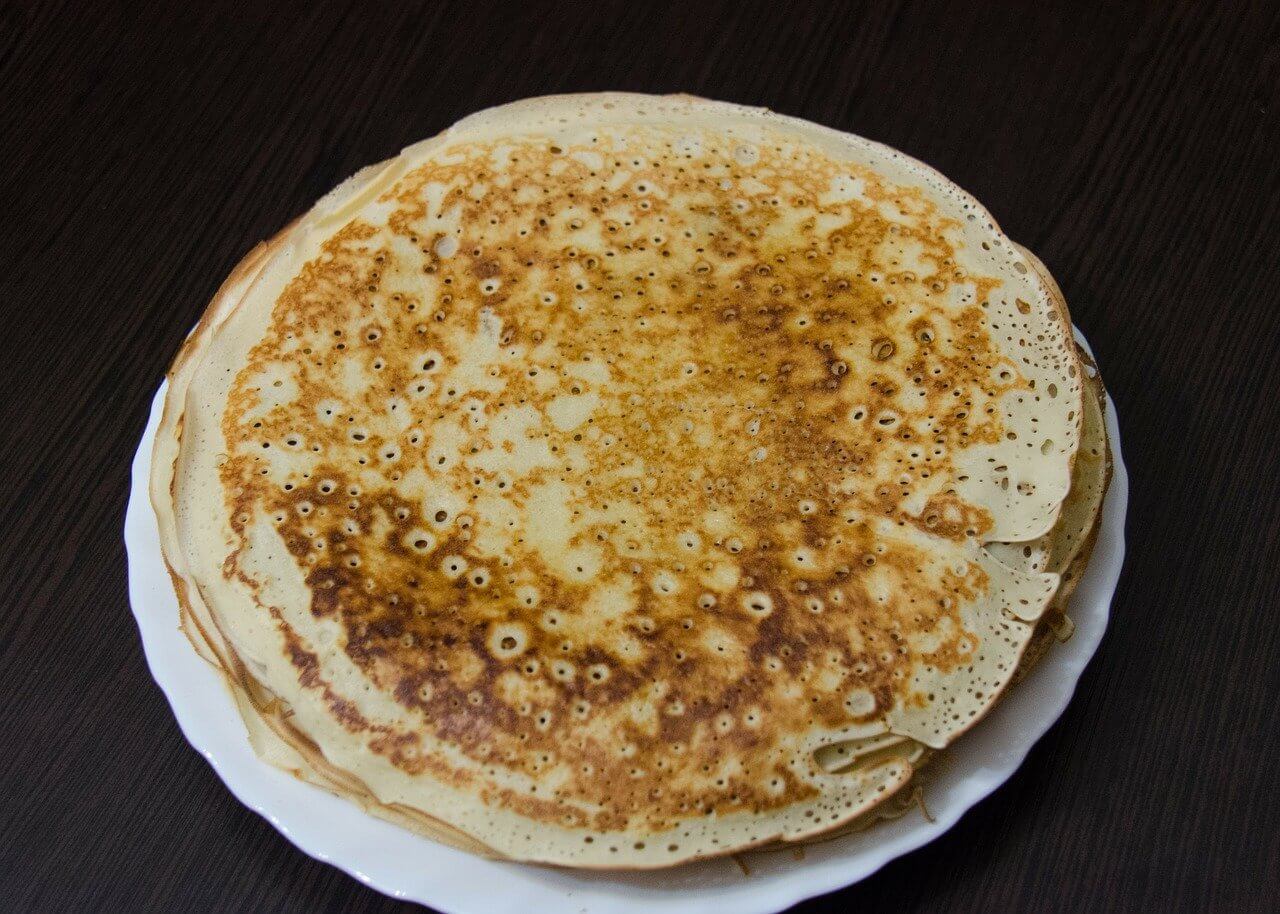Pancakes are the best, aren’t they? There is no one in the world who doesn’t like a pancake! However, creating them can be a bit of an issue. Why is the first pancake always bad? Let’s delve into the reasons why, and explore solutions that you can use to improve your pancake production.
Why Is The First Pancake Always Bad?

We have all spent our lives accepting the fact that the first pancake cooked is always the one that nobody wants. But why is this? And what can we do about it?
So, when cooking pancakes, the heat from the hob needs to have spread evenly all over the pan.
Secondly, the oil or cooking fat needs to be distributed all over the surface of the pan in a thin, even layer.
The first pancake is generally not a good, evenly cooked pancake, because the pan hasn’t heated properly and the oil hasn’t spread.
Heating up a pan causes the metal to expand slightly, so the first pancake may not be great if you haven’t allowed it to heat up enough.
Subsequent pancakes are generally more uniform and tend to hold their shape better, because the pan has had time to season.
However, just because it falls apart doesn’t mean that they are inedible! A pancake in pieces is still a pancake, so munch it down and enjoy it (just don’t show your friends!)
This Guardian article explains just why the first pancake is always bad, and explains some things you can do to improve it.
Is It Ok To Eat Undercooked Pancakes?
Because pancake mixture contains egg, it is not recommended that you eat it unless it is cooked all the way through.
No licking the bowl or absently scooping out a finger full of the batter – it may cause you health problems, and it is actually not all that tasty either!
Eating undercooked pancakes is unlikely to kill you, but it may cause a tummy upset or other such issues if you consume a lot of it.
It is always sensible with any food that you cook to ensure that it is piping hot all the way through, and this is even more important with foods that contain meat, eggs, fish or dairy.
- In order to cook pancakes properly, the heat will need to be high. You don’t want it hot enough that the oil smokes, but it needs to be hot in order to cook fast.
- Pour a small dollop of the mixture right into the centre of the pancake griddle, then tilt the pan to spread the mixture out to the sides of the pan.
- Lift the edges slightly with a spatula, and tilt any leftover liquid down under the pancake.
- Flip it over to cook the other side (you can just flip it with a spatula if you are not a natural juggler and don’t want pancake mix all over your floor!)
- Leave it for a few minutes, until both sides are an even, golden brown.
- Add a little more fat to the pan and continue this process until you have cooked all the mixture.
- Check that the whole of the pancake is cooked through, particularly the middle, which is sometimes not as well cooked.
How Do You Know If Pancakes Are Undercooked?
A perfectly cooked pancake is a thing of beauty! But, if you’ve never cooked one then how do you know it is done?
- Test the pancake by lifting the edge of it with a spatula.
- If it lifts away cleanly from the bottom of the pan and is a golden brown colour, it should be good.
- The middle of the pancake often takes longer to cook than the edges, so make sure you lift the whole thing to check under it before you flip it.
- Once the whole of one side lifts easily from the pan and is the right colour, flip it over and repeat on the other side.
- Doing this will ensure you have a stack of perfectly cooked, perfectly delicious pancakes!
How Do You Not Ruin The First Pancake?
First of all, check your pancake mixture. This should be quite thin; slightly thicker than milk but still pourable.
It should drip off a spoon, rather than running off it. Too thin and your pancake won’t have the desired consistency.
Now make sure your pan is hot enough. Getting the pan up to speed before you start cooking will help your pancakes get a smooth, uniform texture.
You should also spread the cooking fat around the pan. Making sure that it is evenly spread will help the pancakes to cook evenly.
Brush the whole pan with butter, then wipe away the excess. This mimics the well-spread cooking fat that ensures the later pancakes are better.
This checklist should help you on your way to make the perfect pancake – even the first one.
After you have cooked the first one, the fat is spread more evenly around the pan, which makes for a better pancake experience.
Cooking subsequent pancakes will spread the heat and the cooking fat around so that the next ones are better.
Also, if all else fails, remember that the first pancake is the trial run to ensure that the pan is hot enough and the conditions are right. And, chef’s perks, you get to munch on the first one!
Here is a little video explaining why the first pancake is often bad, and what you can do to fix it. This is based on American type pancakes, but some great advice in here:
Pancakes are great, no matter what state they are in – but it is better to have that classic shape and flat surface on which to spread your toppings.
Yes, the first pancake may be sightly wonky, but you should now be armed with some tips on why is the first pancake always bad, and how to make it better.